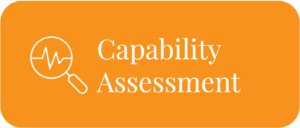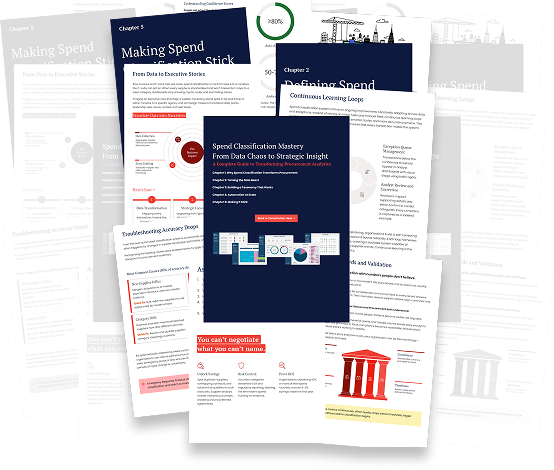Picture this: You’re juggling a critical supplier contract, but it’s stuck in approval limbo. Weeks fly by, and what should’ve been a straightforward decision is now holding up your entire project. Trust me, this scenario is all too familiar in procurement. This frustration reminded me of Jeff Bezos’ (Amazon CEO & Founder) two-way and one-way door decision-making model, a concept he effectively utilised at Amazon. This model is equally applicable to procurement decisions, helping professionals distinguish between reversible and irreversible choices to streamline processes and enhance efficiency.
The speed of decision-making can be just as crucial as the decisions themselves.
In procurement, we’re constantly trying to balance thorough analysis with the pressure of looming deadlines. But here’s the thing – not every decision needs the same level of scrutiny. This is where understanding the nature of decisions becomes key.
Want to listen to our audio stream on this instead?
Introducing Our Two-Part Series on Procurement Decision-Making
Making informed procurement decisions is crucial for the success of any organisation. To provide a comprehensive guide, we’ve split this discussion into two insightful parts:
Part 1: One-Way and Two-Way Decisions in Procurement – Here, we’ll explore the fundamental concepts and help you identify the types of decisions you encounter in your procurement role.
Part 2: Implementing Structured Decision-Making in Procurement: A Step-by-Step Guide – Practical strategies and actionable steps to apply the two-door framework effectively within your organization.
Let’s dive into Part 1!
Firstly, here are a couple of questions to consider:
- How often do we mistake analysis-paralysis for due diligence in our procurement processes?
- Is the fear of making a wrong decision costing us more than the potential consequences of that decision?
Common Challenges in Procurement Decision-Making
Procurement professionals face a unique set of challenges that can significantly slow down decision-making processes. One of the most common issues is the tendency to apply the same level of scrutiny to all decisions, regardless of their risk or impact.
This “one-size-fits-all” approach is the procurement equivalent of herding cats.
Even the simplest decisions get caught in a web of reviews and signoffs, slowing everything down to a crawl. And let’s be honest, we’ve all been there – stuck in approval limbo, watching opportunities slip through our fingers.
Risk aversion also plays a significant role in these delays.
Procurement teams, understandably cautious about making mistakes that could affect the organisation’s financial health or reputation, may over analyse even the simplest of decisions. While thoroughness is crucial for high-stakes choices, it can become a bottleneck when applied universally.
Think about it: delays mean missed chances to negotiate better terms or grab those sweet pricing windows. Projects stall, teams twiddle their thumbs waiting for crucial supplies, and before you know it, you’re the bottleneck everyone’s grumbling about. Not to mention, your suppliers might start looking at you like you’re more trouble than you’re worth.
In an environment where time is often of the essence, these challenges underscore the need for a more nuanced approach to decision-making—one that recognises the importance of speed without compromising on due diligence where it truly matters.
Two-Way and One-Way Door Decision Framework Explained
Jeff Bezos’ decision-making framework categorises choices into two distinct types: two-way door decisions and one-way door decisions.
Two-Way Door Decisions are those that are reversible and typically involve low risk.
If you walk through a two-way door and find that the decision was not ideal, you can easily backtrack and choose a different path. In procurement, think along the lines of testing out a new supplier for a small order or giving a new procurement app a whirl. The key here is speed. You want to empower your team to make these decisions quickly, without getting bogged down in red tape.
One-Way Door Decisions are high-impact choices that are difficult or costly to reverse.
Think of them like an emergency exit door in a building – once you’ve pushed through, it locks behind you, and you can’t go back the same way.
In procurement, this might be signing on the dotted line for a multi-year contract with your biggest supplier or green lighting a massive investment in new tech. Just like that emergency exit, once you’ve made these decisions, there’s no easy way back. They’re choices that fundamentally change your position, making a return to the previous state extremely costly or even impossible.
These are the decisions that deserve your full attention and careful analysis. You need to be absolutely sure before you push through that door, because once it closes behind you, you’re committed to the path you’ve chosen.
How to Apply the Two-Way and One-Way Door Model in Procurement
Alright, let’s roll up our sleeves and dive into how you can put this framework into action.
Two-Way Door Decisions: Streamlining Processes and Delegation of Authority
In procurement, not all decisions carry the same weight, yet many organisations fall into the trap of treating every decision with equal scrutiny. You know those low-risk, easily reversible decisions that pop up every day? It’s time to stop treating them like they’re make-or-break choices. Here’s the deal: empower your team to make these calls quickly.
For instance, let’s say you need to pick a supplier for a low-risk, low-spend item. Instead of getting bogged down in endless approvals, give your operational managers the authority to make these decisions within set limits. With the right procurement software, you can automate these workflows and watch those small, routine purchases fly through the system. No more bottlenecks, just smooth sailing.
One-Way Door Decisions: Strategic Analysis and Cross-Functional Collaboration
On the other hand, one-way door decisions involve high stakes and long-term commitments, necessitating a thorough, strategic approach. These decisions often require the involvement of senior leadership and cross-functional teams to ensure that all potential risks and benefits are fully evaluated.
Let’s say you’re considering a long-term partnership with a key supplier. This isn’t the time for quick decisions. You need to dive deep – we’re talking comprehensive analysis, supplier scorecards, risk assessments, the works. And don’t go it alone – bring in your finance wizards, legal eagles, and operations gurus. Their insights could be the difference between a good decision and a great one.
Finding the Decisioning Sweet Spot
The key to effective procurement lies in striking the right balance between efficiency and strategic rigor. For low-risk, reversible decisions, streamlined processes and clear delegation of authority can eliminate unnecessary. Streamline your processes and trust your team to act fast. Conversely, high-stakes decisions require a more deliberate approach, with in-depth analysis and collaboration across departments to ensure the best possible outcome.
Avoiding the Pitfalls of a One-Size-Fits-All Approach
A one-size-fits-all approach to procurement processes often leads to inefficiencies and delays. When all decisions are subjected to the same level of scrutiny, regardless of their impact or risk, the result is often procedural bottlenecks that slow down the entire procurement function.
This approach not only delays routine purchases but also forces teams to rush through critical decisions when timelines become tight. For instance, a strategic sourcing initiative might be compromised because the procurement team is bogged down by minor decisions that could have been handled more efficiently. As a result, the organisation might miss out on negotiating better terms or securing a competitive advantage due to these unnecessary delays.
Strategic Improvement
To avoid these pitfalls, organisations must tailor their procurement processes based on the nature of the decision. Low-risk, reversible decisions should have streamlined approval processes, possibly automated through procurement software. High-stakes decisions should be reserved for detailed analysis and senior leadership involvement, with clear guidelines on escalation procedures and compliance requirements.
Conclusion: Navigating Procurement Decisions with Confidence
As we’ve explored, distinguishing between two-way and one-way door decisions is pivotal in optimising your procurement processes. By understanding the nature of each decision type, you can mitigate delays, empower your team, and drive your projects forward with greater efficiency and confidence.
However, recognising these decision-making frameworks is just the beginning. The real transformation lies in implementing structured strategies that align with these concepts to enhance your procurement outcomes.
Ready to Take the Next Step?
In Part 2:Implementing Structured Decision-Making in Procurement, we delve into a comprehensive step-by-step guide to structured decision-making in procurement. We’ll walk you through practical strategies and actionable steps to apply the two-way and one-way door framework effectively within your organization.
Stay tuned and read Part 2 here to transform your procurement decision-making process from theory to practice!









